Tarragon, a distinctive herb known for its subtle licorice taste, is a staple in many cuisines, particularly French cooking. As a versatile and aromatic herb, it enhances dishes from salad dressings to sauces. This guide explores the 25 best substitutes for tarragon, including fresh and dried alternatives, ensuring your culinary creations never miss their unique flavor.
This post may contain affiliate links.
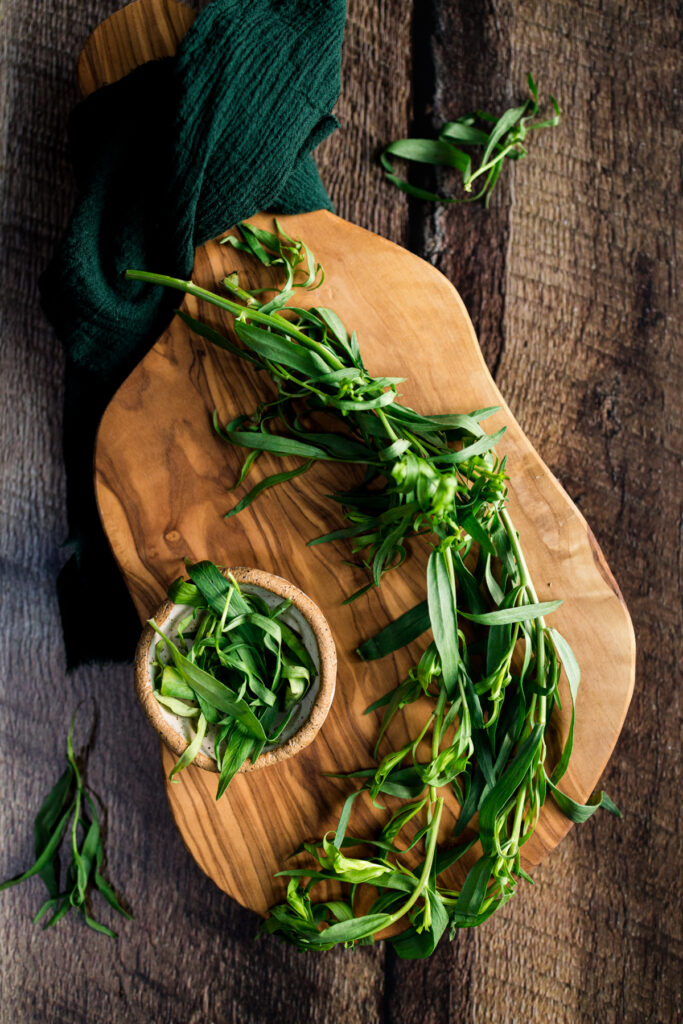
About Tarragon
Tarragon is a perennial herb with a unique flavor profile, often described as a blend of mild vanilla and sweet anise. It’s a key ingredient in French cuisine, used to add a distinctive, slightly bittersweet taste to dishes like béarnaise sauce, salad dressings, and various other recipes. As part of the sunflower family, tarragon brings a burst of flavor to meals and offers various health benefits, including aiding digestion and acting as a mild sleep aid. This herb comes in three primary types – French tarragon, known for its strong flavor. Russian tarragon has a milder taste, and Mexican Tarragon is the most potent of them all.
What foods is it traditionally used in?
Tarragon is traditionally used in a variety of dishes. Its fresh leaves can be chopped and sprinkled over salads or used to flavor oils and vinegar. In French cooking, tarragon is part of the “fines herbes” blend, often added to sauces. It’s also a great way to enhance the taste of pasta dishes, grain-based meals, and vegetable stews. The dried version of tarragon is usually used in slow-cooked dishes, imparting its stronger flavor over time.
What are the health benefits of tarragon?
Tarragon is a flavorful herb and a good source of various nutrients. Traditionally, tarragon has been used medicinally to relieve pain.
It is part of the Asteraceae plant family, which has been shown to improve sleep quality. Better sleep is associated with improved mental health regardless of mental health difficulties or severity.
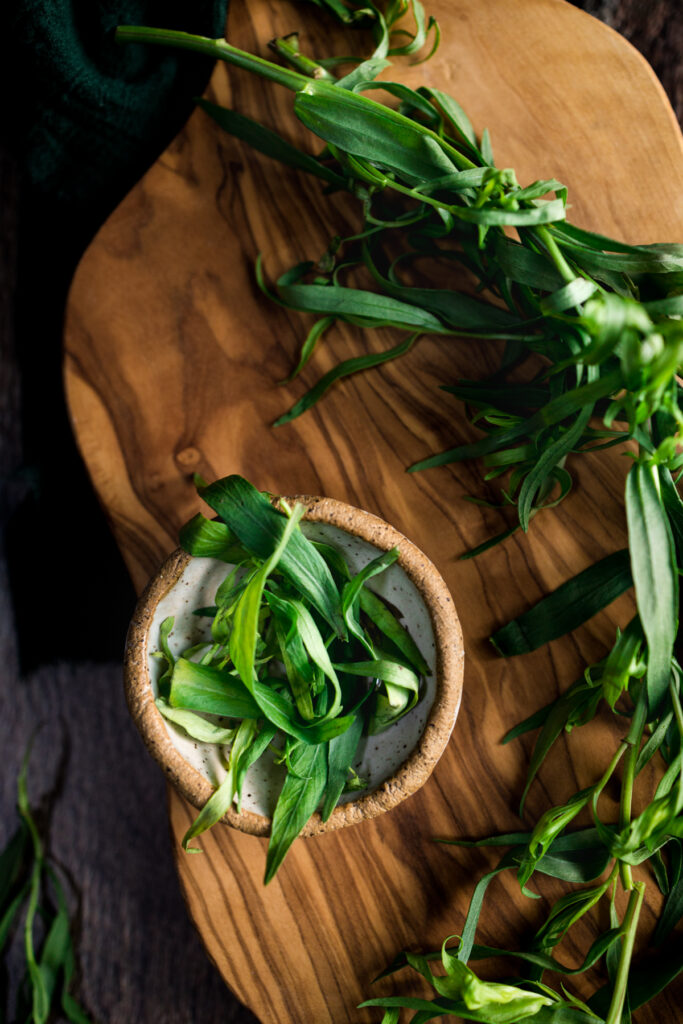
The List: 25 Best Tarragon Substitutes
These are some great alternatives when you run out of tarragon or can’t find it at your local grocery store. Enjoy the taste of tarragon with some of these tarragon alternatives, or impart a new flavorful twist!
- Fresh French Tarragon: Known for its sweet, licorice-like flavor, fresh French tarragon is a staple in sauces like béarnaise and works well in light dressings and salads. It’s an excellent substitute in dishes requiring a prominent yet delicate anise note.
- Dried French Tarragon: Dried French tarragon has a more concentrated, slightly bitter taste. It’s ideal in slow-cooked stews and soups, where it imparts its distinctive flavor without overpowering other ingredients.
- Fresh Russian Tarragon: Less intense than the French variety, fresh Russian tarragon has a grassier, milder flavor. It’s suitable for salads, herbal butter, and light sauces where a subtle tarragon essence is desired.
- Mexican Tarragon: Mexican tarragon has a potent anise-like flavor with a hint of citrus. It’s great in Mexican cuisine, like salsas and bean dishes, and can be used in any recipe, calling for a robust herbal presence.
- Fresh Anise Greens: These greens offer a sweet, mildly spicy flavor similar to tarragon. They are perfect for adding a fresh, licorice note to Mediterranean dishes’ salads, dressings, and garnishes.
- Anise Seed: With their intense licorice flavor, anise seeds are best used sparingly. They’re ideal in baked goods, spice rubs, and dishes where a potent burst of anise flavor is needed.

- Fresh Fennel Fronds: Fresh fennel fronds have a delicate anise-like taste, making them a great tarragon substitute in salads, garnishes, and light seafood dishes. They bring a fresh, herby element to any dish.
- Fennel Seeds: Fennel seeds have a stronger, more aromatic anise flavor. They are excellent in spice blends, marinades, and cooked dishes like stews and braised vegetables.
- Fresh Angelica: With its sweet, earthy taste, fresh Angelica is a good alternative in salads, teas, and desserts. It’s particularly suited for dishes where a subtle, sweet herby note is desired.
- Dried Angelica: Dried Angelica offers a sweet, musky flavor ideal for flavoring baked goods and slow-cooked savory dishes. It complements root vegetables and grains well.
- Fresh Basil: Fresh basil, with its sweet, peppery flavor, is an excellent tarragon alternative in certain dishes. It’s an excellent choice in Italian and Mediterranean dishes, especially in pesto, salads, and tomato-based recipes.
- Dried Basil: Dried basil offers a more concentrated, slightly sweet flavor. It works well in soups, sauces, and Italian dishes where a fragrant, herbaceous note is needed.
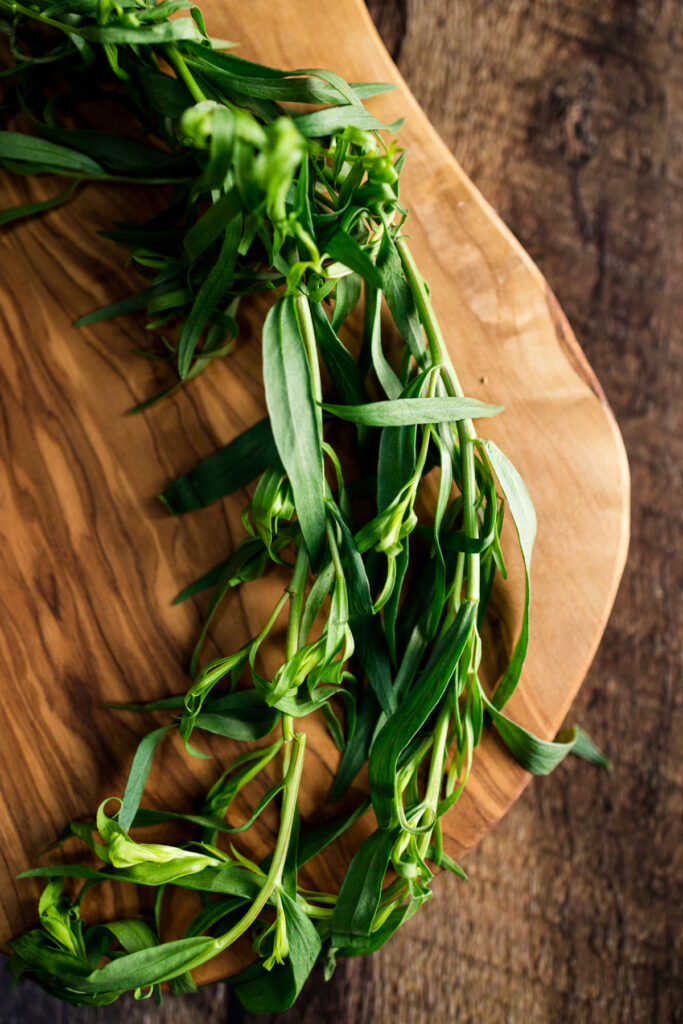
- Fresh Dill: Fresh dill has a slightly tangy, grassy flavor. It’s a great substitute in dishes like salads, dressings, and pickles, where a lighter, fresher herbal flavor is preferred.
- Dried Dill: Dried dill, with its milder and more subtle flavor, is suitable for cooked dishes like soups, stews, and grain dishes, adding a delicate herby touch.
- Fresh Oregano: Fresh oregano offers a robust, slightly spicy flavor. It’s a good substitute for Mediterranean and Mexican dishes, particularly tomato-based sauces and grilled vegetables.
- Dried Oregano: Dried oregano has a more intense, earthy flavor. It’s ideal for use in seasoning blends, marinades, and dishes where a strong, warm herbal note is desired.
- Fresh Rosemary: Pungent and piney. It matches well with heartier dishes, roasted vegetables, and grain-based meals.
- Dried Rosemary: Strong in flavor and best used in moderation. It’s great for slow-cooked dishes and hearty stews.
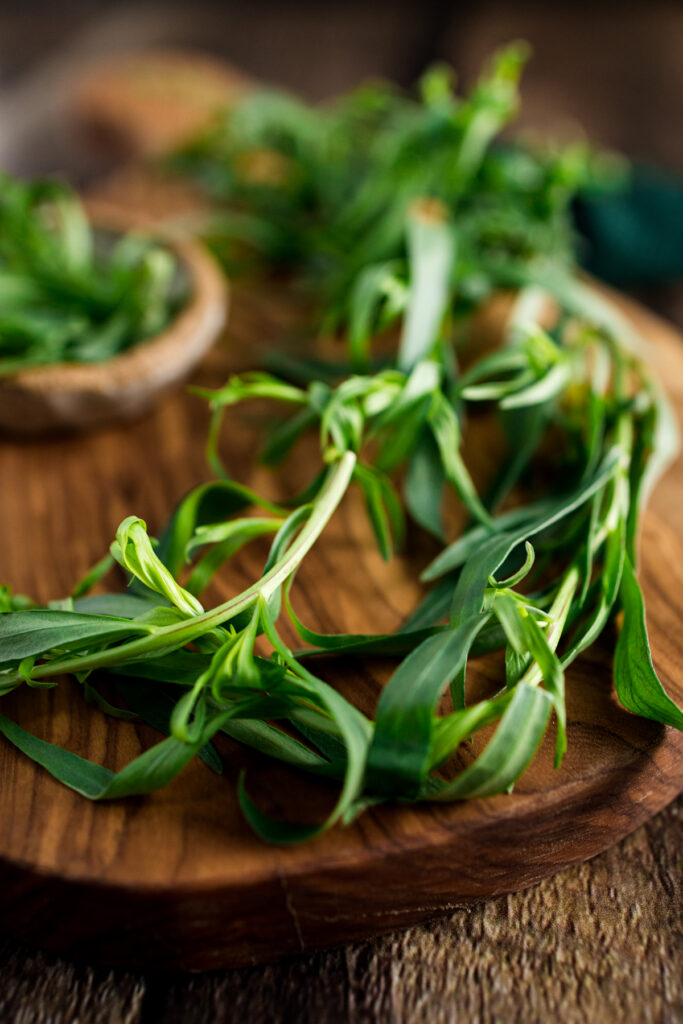
- Fresh Marjoram: Fresh marjoram, with its sweet and citrusy notes, is a fantastic substitute for tarragon. It’s especially useful in Mediterranean dishes, adding a light, floral aroma to sauces, dressings, and vegetable dishes.
- Dried Marjoram: Dried marjoram offers a subtler, woodsy taste. It’s perfect for seasoning soups, stews, and meatless roasts, where its gentle flavor can subtly enhance the dish without dominating it.
- Fresh Chervil: This delicate herb has a mild flavor with subtle hints of licorice, making it a great stand-in for tarragon. It’s best used in French cuisine, especially in light sauces and salads.
- Dried Chervil: With a milder taste compared to its fresh counterpart, dried chervil is ideal for use in longer cooking processes. It’s great in soups, stews, and as a seasoning in grain-based dishes.
- Fresh Parsley + Cinnamon: A combination of fresh parsley and a pinch of cinnamon can mimic tarragon’s flavor. This blend is excellent in Mediterranean and Middle Eastern dishes, offering a unique and complex flavor profile.
- Dried Parsley + Cinnamon: Similarly, dried parsley mixed with a hint of cinnamon provides a taste similar to tarragon. It’s suitable for dishes that require prolonged cooking and can endure strong flavors.
- Herbes de Province: This classic French blend, which may include dried tarragon, is a wonderful alternative. Its complex flavor complements a wide range of dishes, from vegetable stews to grain-based meals.
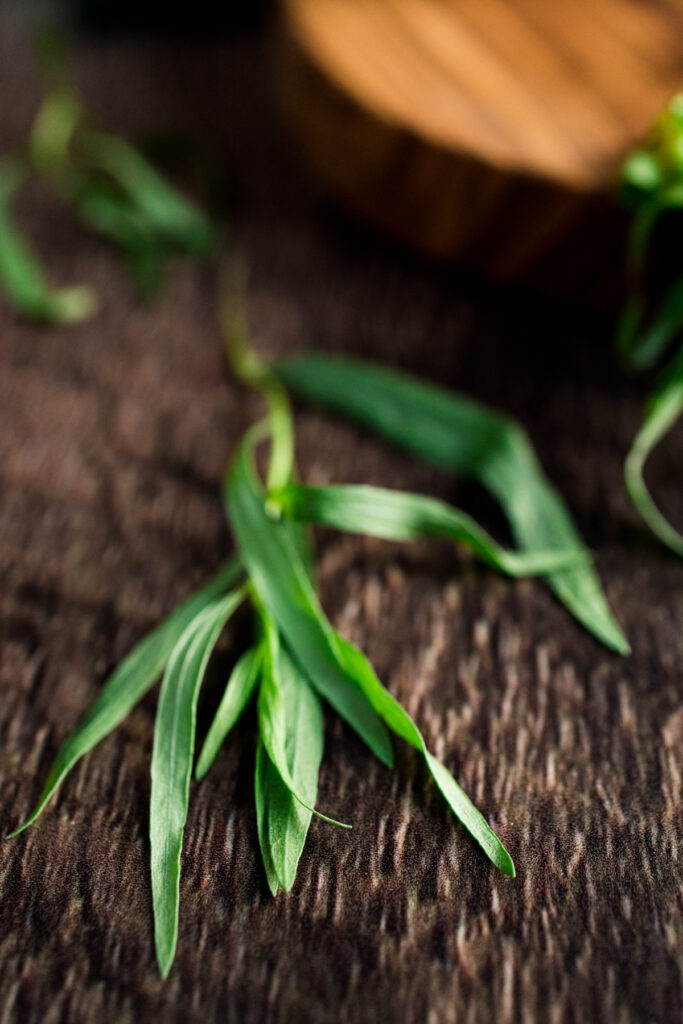
FAQ
If you don’t have tarragon, herbs like dill, marjoram, or a mix of parsley and cinnamon can serve as great substitutes, depending on the recipe.
Fresh thyme can be used as a substitute for tarragon in many dishes, although it has a more earthy and less anise-like flavor.
Tarragon has a unique licorice-like taste, which is quite different from the robust, earthy flavor of oregano.
Chervil or a small amount of fennel fronds can be a good substitute for tarragon in béarnaise sauce, maintaining a similar flavor profile.
Final Words
Whether you use a tablespoon of fresh tarragon or a teaspoon of its dried version, its unique flavor can be mimicked by a range of substitutes. These alternatives, from fresh herbs in the sunflower family to dried herbs with a similar flavor, offer different tastes that can suit various dishes.

This post may contain affiliate links, meaning I’ll receive a commission if you purchase through those links at no extra cost to you. Please read our full disclosure for more information. Thank you for supporting Raepublic.
